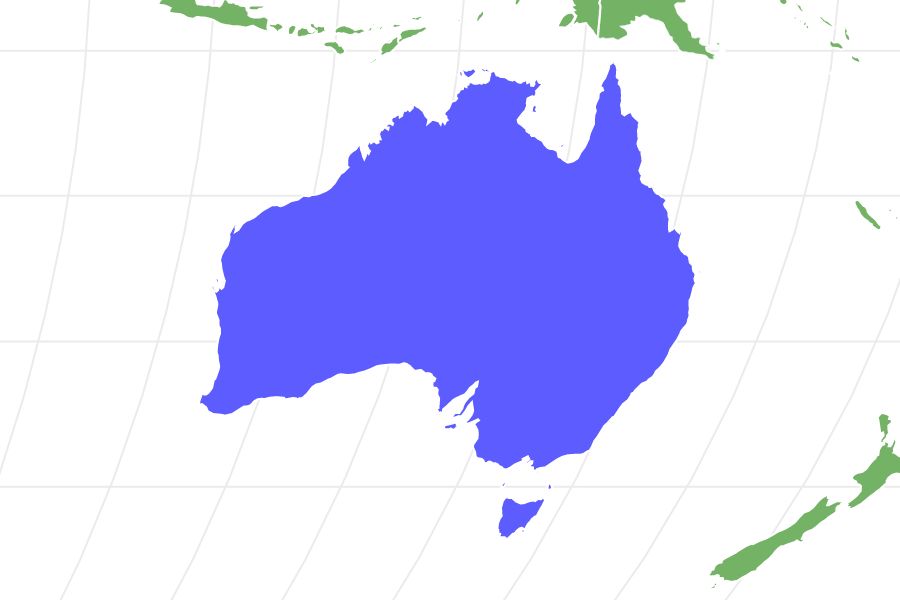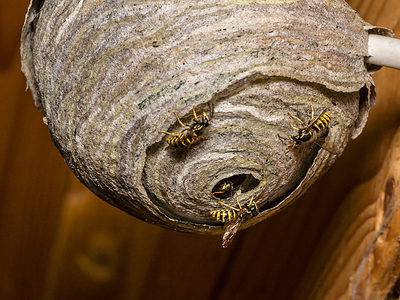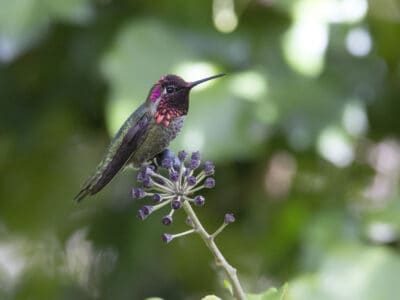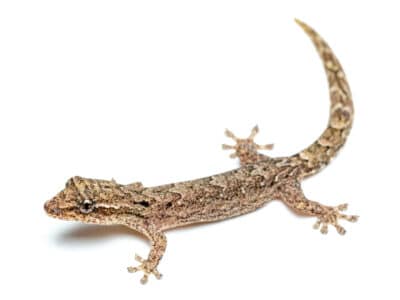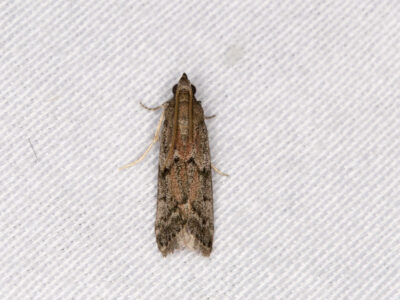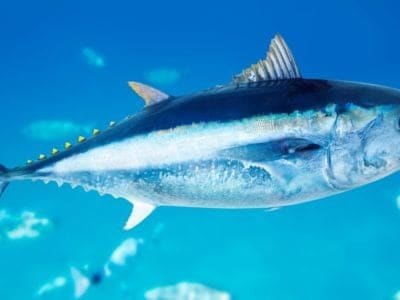Yabby
Cherax destructor
The yabby can survive long periods of droughts by burrowing into the soil.
Advertisement
Yabby Facts
- Prey
- Fish, frog eggs, worms
- Main Prey
- Fish and worms
- Fun Fact
- The yabby can survive long periods of droughts by burrowing into the soil.
- Most Distinctive Feature
- Yabbies are characterized by an oversized claw
- Habitat
- Swamps, streams, rivers, reservoirs, and farm dams
- Predators
- Humans, fishes, birds, insects, and other yabbies
- Diet
- Omnivore
- Lifestyle
- Nocturnal
- Type
- Freshwater crayfish
- Common Name
- Yabby
- Special Features
- Yabbies can burrow into the soil and remain in a stage of inactivity when conditions are not favorable
- Number Of Species
- 15000
- Location
- Australia and New Guinea
Yabby Physical Characteristics
- Color
- Blue
- Black
- Black-Brown
- Skin Type
- Hard Outer Shell
- Lifespan
- 7 Years
- Weight
- 0.04–0.17 pounds
- Length
- 4-12 inches
- Age of Sexual Maturity
- 2–3 years
- Venomous
- No
- Aggression
- High
The yabby is a fully-aquatic freshwater crayfish native to Australia and has the widest range of any crayfish on the continent. A member of the Cherax genus, yabby typically live in slow-moving waterways across Australia and New Guinea. It has a unique survival mechanism that allows it to endure long periods of drought. Some members of this genus can be problematic sometimes because they can cause damage to the wall of farm dams and levee banks.
Yabby Species, Types, and Scientific Name
The name “yabby” applies to the Cherax genus of crayfish. The genus is native to the Southern Hemisphere and is quite common in Australia and New Guinea. The word “yabby” originates from the “Wemba Wemba,” a native Australian language, and it refers to the crustacean’s massive pincers.
Cherax destructor — the common yabby or blue yabby — is the most popular and widespread member of this genus. The generic name is a reference to the crayfish’s tendency to damage levee banks and farm dam walls.
The yabby is a crustacean in the Parastacidae family, a family of freshwater crustaceans native to the Southern Hemisphere. There are up to 15 genera in this family. They belong to the order Decapoda, along with crabs, lobsters, prawns, and shrimp. The large and diverse order includes up to 15,000 species distributed in about 2,700 genera.
The genus contains up to 59 species. Some of the most popular ones include:
- Cherax destructor — Common yabby
- Cherax destructor albidus — White yabby
- Cherax cainii — Smooth marron
- Cherax quadricarinatus — Queensland red claw
- Cherax holthuisi
- Cherax parvus
- Cherax nucifraga
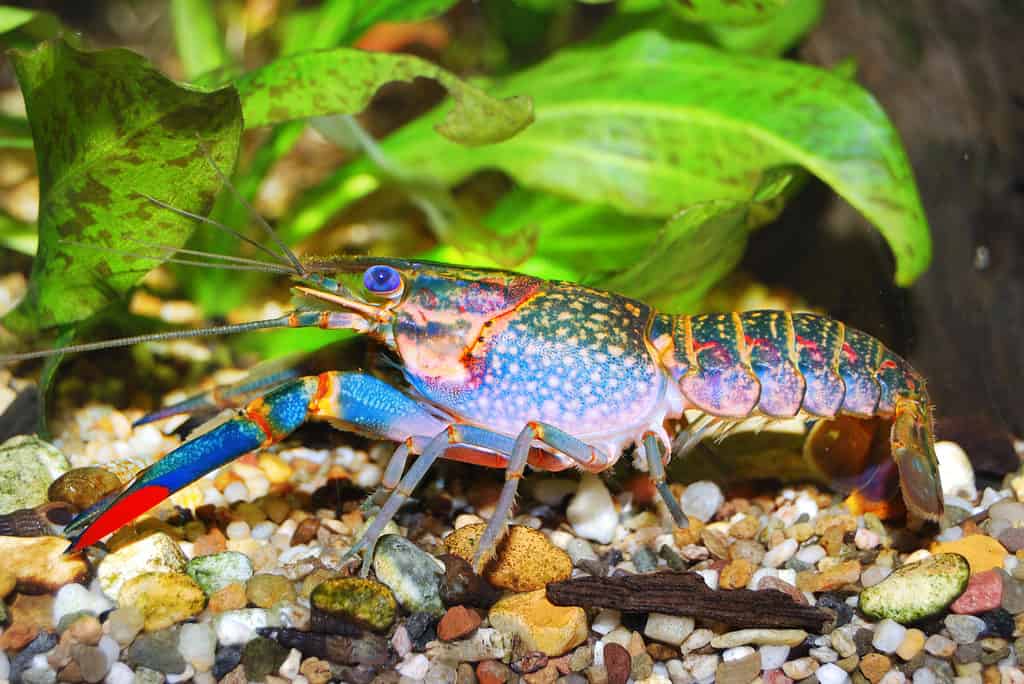
The Queensland red claw (
Cherax quadricarinatus) has a bright red patch on its claw.
©Alex Stemmers/Shutterstock.com
Appearance — How To Identify Yabby
Yabbies are among the largest crayfish genus in Australia. Their body is characterized by an external carapace, an armor to protect internal organs. The body of the yabby is divided into three sections — the head, thorax and tail.
The head has four ridges (going from the rostrum to the back of the head), two pairs of antennae, and a smooth rostrum (the region between the eyes).
They have four pairs of little legs called swimmerets and two large pincers attached to the thorax. Appearance varies slightly from one species to the other. However, most species have broad spade-like claws. These large pincers typically have a mesh-like color pattern. The color of the rest of their body is highly variable depending on the species and its habitat.
The Queensland red claw (Cherax quadricarinatus) has a bright red patch on its claw. The marron, on the other hand, is a dark purple color, while the common yabby is blue or cyan. The striking color of some yabby species is the reason why they’re popular as aquarium pets.
Generally, their color ranges from black to blue-black or dark brown. Some species may also be light-brown, beige, or green-brown. They all have a smooth abdomen which is as wide as their thorax. As far as size goes, yabbies are among the largest crayfish in Australia. Yabbies can weigh between 0.04 and 0.18 pounds and typically measure between 2.7 and 7.8 inches in length.
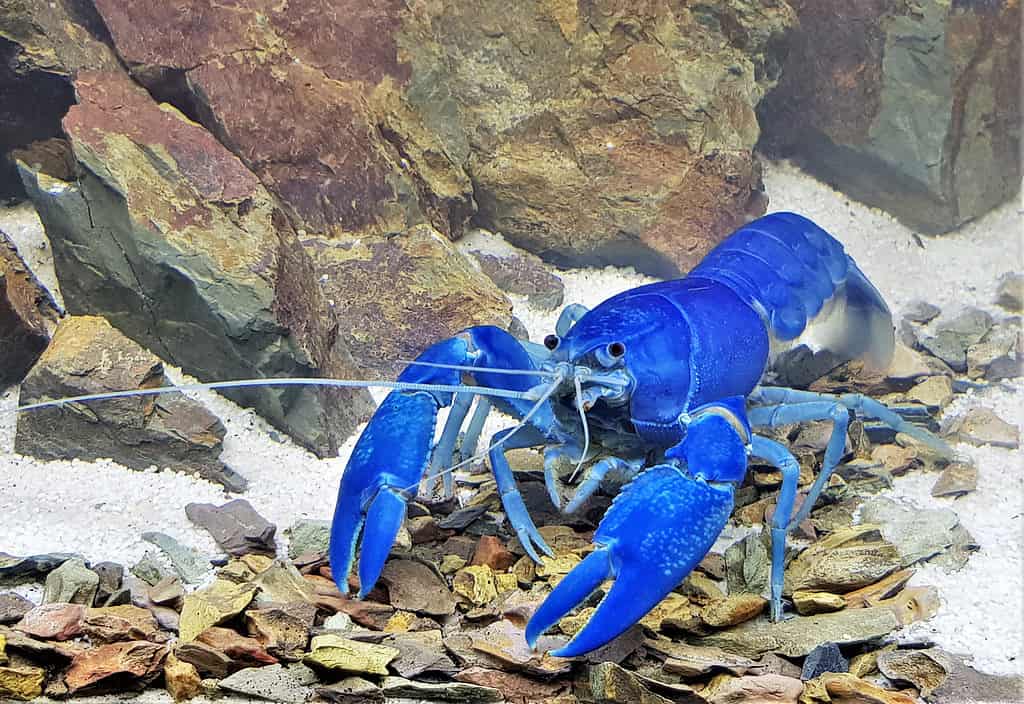
The striking color of some species, such as the common yabby, is the reason why they’re popular as aquarium pets.
©Arunee Rodloy/Shutterstock.com
Habitat — Where To Find a Yabby
Yabbies are adaptable and strong, allowing them to survive in a variety of environments. They can adapt to the scorching core of Australia and endure the cold in the lakes of the snowy mountains.
Members of this genus live in lakes, rivers, streams, and ponds across the Southern Hemisphere. The most widely distributed species is the common yabby (Cherax destructor), which is quite abundant in lowland freshwater bodies in Australia and New Guinea. Common yabbies can enter into a prolonged period of dormancy known as aestivation. During dry conditions, they make burrows deep in swamp beds and muddy creeks and lie dormant for several months until it is wet again.
In New Guinea, Cherax crayfish are most abundant in the Paniai Lakes, but they’re also found in other lakes, streams, and rivers. The only cave-living crayfish species in the Southern Hemisphere (Cherax acherontis) lives in New Guinea.
The common yabby is a well-known aggressive breeder that can invade a region and disrupt agriculture’s natural balance through its burrowing activities. Some species are also kept in aquariums due to their unique and vibrant colors.
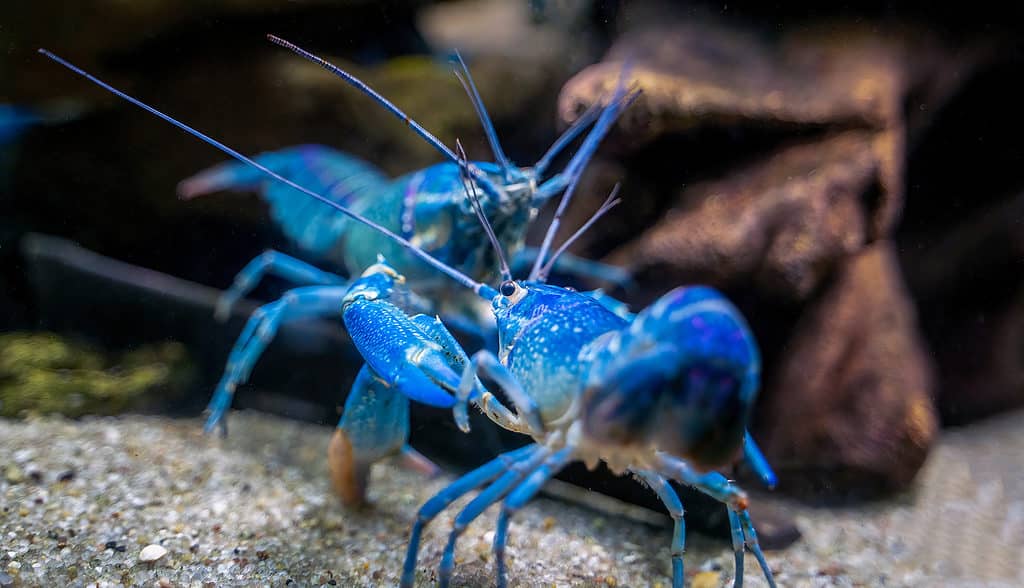
Members of the
Cheraxgenus live in lakes, rivers, streams, and ponds across the Southern Hemisphere.
©iStock.com/Arpan
History and Evolution
The yabby is a freshwater crayfish meaning it belongs to the crustacean subphylum. This group of aquatic arthropods came on the scene for the first time during the Cambrian Period (about 542 to 488 million years ago). The earliest members of this group to evolve were the ostracods. Other families in this subphylum began to evolve as time went by. The Palaeopalaemon, one of the earliest members of the decapod order, evolved during the Devonian Period about 416 million to 359.2 million years ago. The crayfish clade evolved sometime during the Late Permian Period, about 260.4 million to 251 million years ago.
There are still a lot of unanswered questions about the yabbies and how they evolved. Back in 2008, scientists discovered the first physical evidence that crayfish lived in Australia as far back as the Mesozoic Era (115 million years ago). The evidence, which included actual body evidence and burrows, was found at Dinosaur Cove in Victoria.
Diet — What Do Yabbies Eat?
Yabbies are detrivores (scavengers). They eat dead plants, rotting algae, small fish, frog eggs, worms, and whatever else they can find underwater. Their massive pincers help them to take food into their mouths. The yabby sometimes attacks and eats its kind. Juveniles and adults whose bodies are still soft after molting are often attacked by bigger yabbies and eaten.
What Eats Yabbies?
A yabby can live up to four or five years in the wild, barring unusual occurrences. Some of the natural predators of this crustacean include, other yabbies, humans, birds, and insects are some of its natural predators. Water birds and larger fish like the callop and Murray cod rely on yabbies as a staple meal.
Small fishes like gudgeons and goldfish also prey on this freshwater crayfish in large numbers. They may also be eaten by insects such as the ferocious water beetles and their larvae (toe biters), backswimmers, and dragonfly nymphs (mud eyes). Catching yabbies is still a well-liked rural pastime known as “yabbying.”
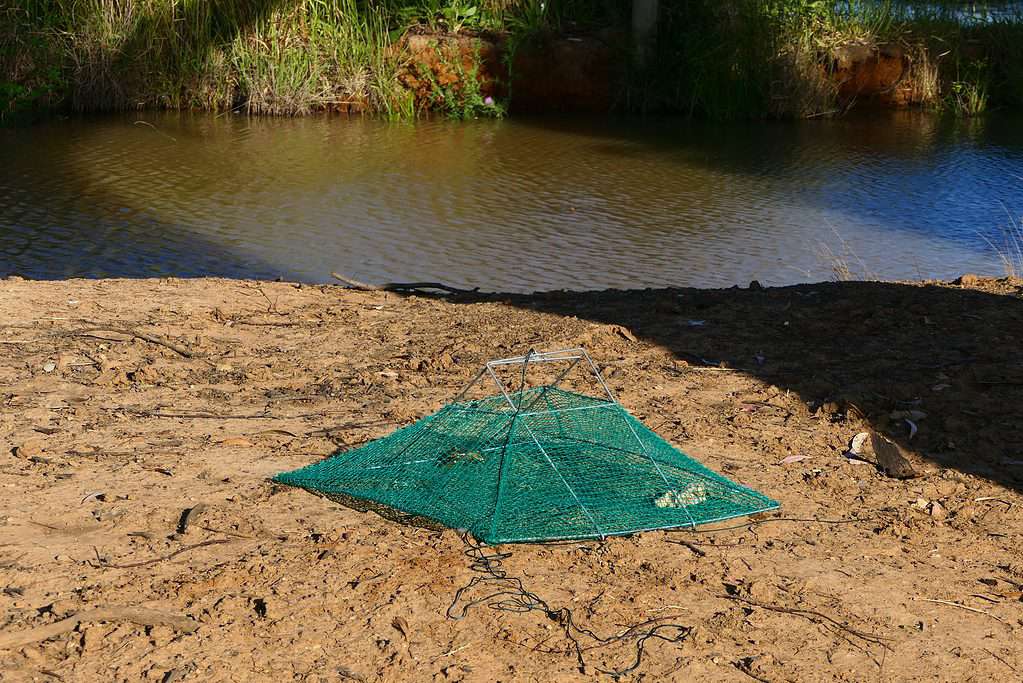
Catching yabbies is still a well-liked rural pastime known as “yabbying.”
©P.j.Hickox/Shutterstock.com
Related Animals
View all 32 animals that start with YYabby FAQs (Frequently Asked Questions)
Is the yabby dangerous?
Yabbies can hurt you with their sharp claws; they are not considered cuddly pets, although some people keep them at home in aquariums.
How many legs does a yabby have?
A yabby is an arthropod with jointed legs. They have four pairs of walking legs.
How do you identify a yabby?
Yabbies have two claws and a body covered with hard armor. They can range in color from blue to dark brown or black depending on their habitat and the species types.
Thank you for reading! Have some feedback for us? Contact the AZ Animals editorial team.
Sources
- NSW Government Department of Primary Industries, Available here: https://www.dpi.nsw.gov.au/fishing/aquaculture/publications/species-freshwater/freshwater-yabby
- The Fish Site, Available here: https://thefishsite.com/articles/a-guide-to-fishing-and-farming-yabby
- Government of Western Australia, Available here: https://rivers.dwer.wa.gov.au/species/cherax-destructor
- Australian Museum, Available here: https://australian.museum/learn/animals/crustaceans/black-yabbie

